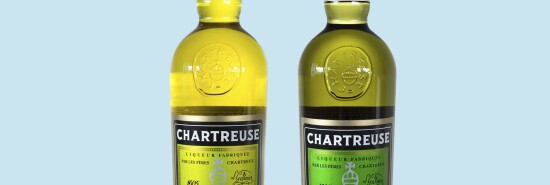
‘The only liquor so good they named a color after it’
Eric Felten
You have to give the people involved with making and selling Chartreuse their props. The consumers of that peculiar, vegetal French liqueur have been wigging out at the news that the monks who make the stuff have decided to make less. Bartenders and drinks geeks alike, for whom the use of Chartreuse provides instant bar cred, have been running from liquor store to liquor store in hopes of finding the odd bottle. The monks remain serene.
But there are some very strange goings-on in the French Alps. The Carthusian brothers of the monastery of the Grande Chartreuse are said to have been making the liqueur for hundreds of years. Press agents promoting the quaff testify that “it is still produced by the monks under the aegis of two of them who supervise its production in Aiguenoire in the Chartreuse Valley.”
This is where things start to get interesting. It seems the monks famous for making the liqueur don’t make the famous liqueur. Read carefully: It is made under their “aegis.” Which, in this case, means a couple of the senior brothers keep the recipe but divided so that no one monk knows more than half the herbs, weeds, flowers, twigs, bark, gummy bears, and such that flavor the liqueur. (Since the order obliges them to remain silent, the monks don’t say a lot about their liqueur and how it’s made.)
But anyone can keep quiet. What distinguishes the “Carthusians’ way” is the commitment to a solitude as radical and thoroughgoing as possible. Each of the monks and nuns lives in his or her own cell — a rather nice cell it seems, really more a two-story monastic town house, complete with a garden. In keeping with the hermitic restrictions, chatting over the garden wall is right out.
A removal from the world would seem at odds with the folderol of pop culture. But the Chartreuse company celebrates the celebrities who drink its product. Quentin Tarantino gives shots of Chartreuse a cameo in one of his less well-known films, Death Proof. “Now, is that a tasty beverage, or is that a tasty beverage?” a bartender shouts. “The only liquor so good they named a color after it.” Which is true: Chartreuse is a sickly green. But that claim is complicated by the fact Chartreuse comes in two colors, the green version and the yellow version. (Some clue to the ingredients: The yellow is nonvegan.)
The Chartreuse website includes wonderful malapropisms of translation, with English titles rendered in French and then translated back into English as if designed for comic effect. For example, they are proud that Chartreuse liqueur appears in “the famous novel by F. Scott Fitzgerald, The Magnificent Gatsby.” The part of The Magnificent Gatsby in which they drink Chartreuse, by the way, is the scene in which Daisy sobs because she has “never seen such — such beautiful shirts before.” In other words, Chartreuse has long been associated with extravagant luxury, again, rather at odds with the hermit life of the monks.
The Chartreuse website also informs us that the liqueur turns up in the Alfred Hitchcock film A Woman Disappears. The translation bot must never have come across The Lady Vanishes.
In any case, I’m not persuaded the Carthusian brothers have much to do with the production of the liqueur that they are said to make. After all, there are only a few dozen brothers, and they don’t live in the town, Aiguenoire, where a new distillery has been built and is in use. The distillery manager is not a monk, nor are the “lay people” who are said to help the monks in the business of making the liqueur.
For these reasons, I find myself unpersuaded that the new limit on the production of the green-yellow and yellow-green liqueurs has been mandated by overworked monks. I suspect it is more a marketing ploy, the old “Disney Vault” strategy of manufactured scarcity. So don’t panic. There will be plenty of Chartreuse to go around. Enjoy it in quiet solitude. But be sure to tidy up your cell first.
Eric Felten is the James Beard Award-winning author of How’s Your Drink?
